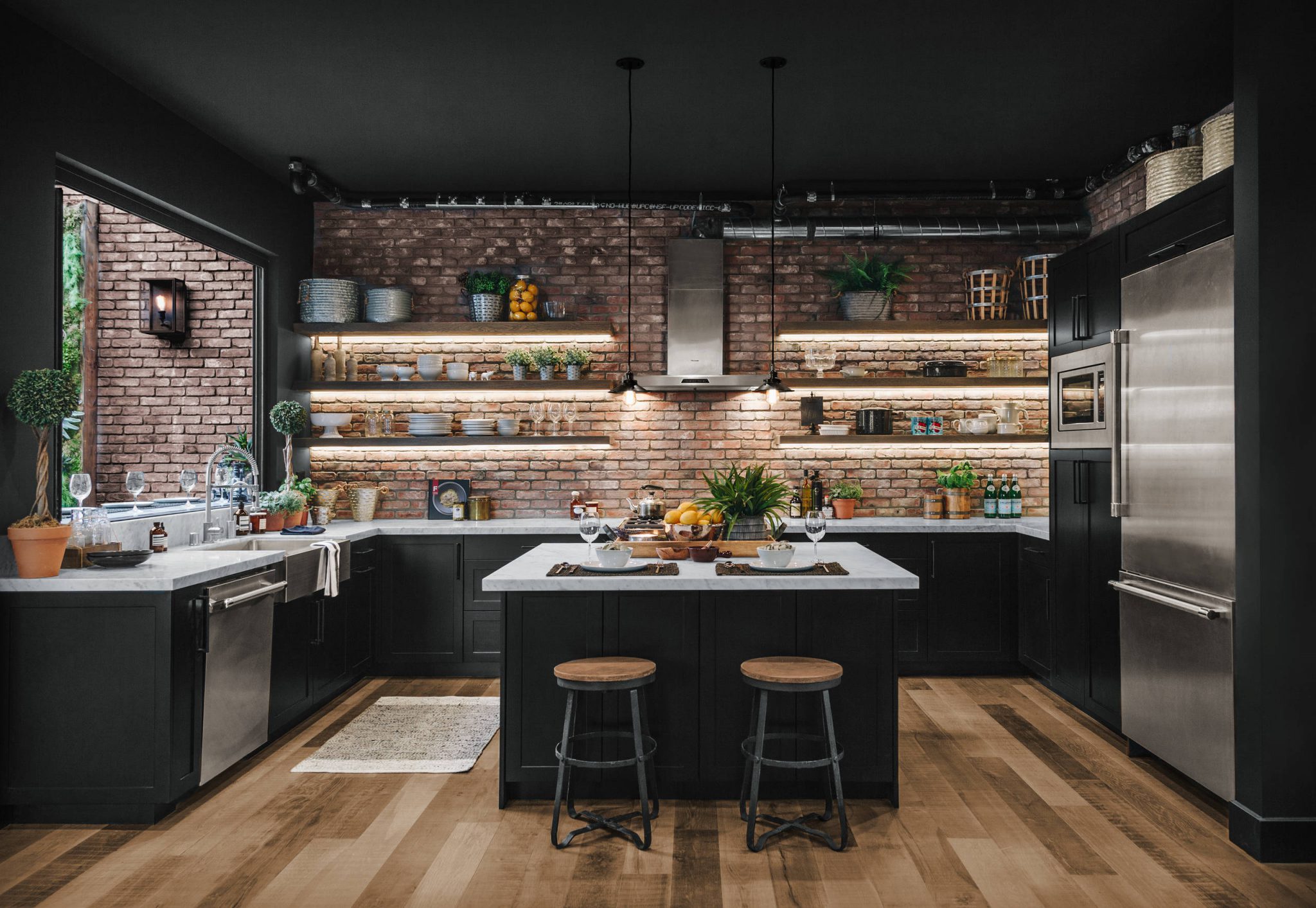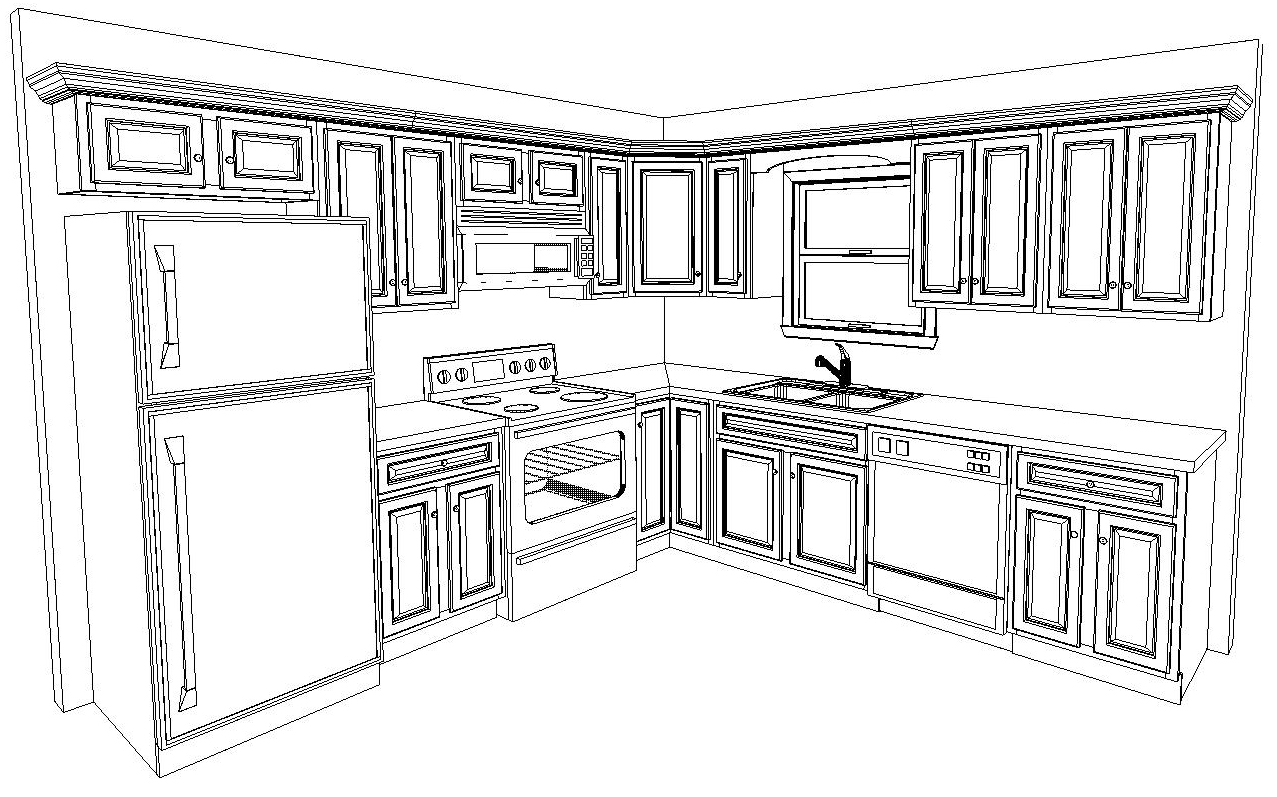Planning Your Kitchen Cabinet Layout

Designing your kitchen cabinet layout is a crucial step in creating a functional and aesthetically pleasing space. It involves considering your lifestyle, cooking habits, and the overall size and shape of your kitchen. By carefully planning your layout, you can maximize storage space, ensure smooth traffic flow, and create a comfortable and efficient work triangle.
Kitchen Cabinet Layout Configurations
Different kitchen cabinet layouts cater to diverse needs and preferences. Here are some common configurations:
- U-Shaped: This layout features three walls of cabinets forming a U-shape. It offers ample storage and countertop space, ideal for large kitchens. However, it can limit traffic flow and create a feeling of enclosure.
- L-Shaped: This layout uses two adjacent walls to create an L-shape. It offers a good balance between storage and open space, making it suitable for medium-sized kitchens. The L-shaped layout provides a clear path for movement and can be adapted to accommodate an island.
- Galley: This layout features two parallel walls of cabinets, creating a narrow, galley-like space. It’s efficient for smaller kitchens, maximizing storage and countertop space within a limited footprint. However, it can feel cramped and limit traffic flow, especially with multiple people working in the kitchen.
- Island: This layout includes a central island that provides additional countertop space, storage, and seating. It is a popular choice for open-concept kitchens, offering a focal point and separating the kitchen from other areas. However, it requires a larger kitchen space and can impact traffic flow.
Pros and Cons of Kitchen Cabinet Layouts
Each kitchen cabinet layout offers unique advantages and disadvantages. Consider these factors when choosing the best layout for your kitchen:
- Space Utilization: U-shaped and L-shaped layouts offer ample storage and countertop space, while galley layouts maximize space in smaller kitchens. Island layouts require a larger footprint and can impact traffic flow.
- Traffic Flow: Galley layouts can limit traffic flow, while U-shaped layouts can feel enclosed. L-shaped and island layouts provide more open space and clear pathways for movement.
- Work Triangle Efficiency: The work triangle is an imaginary line connecting the sink, stove, and refrigerator. It should be easily accessible and facilitate a smooth workflow. U-shaped and L-shaped layouts generally create efficient work triangles, while galley layouts can be less efficient.
Examples of Kitchen Cabinet Layouts
Here are some examples of kitchen cabinet layouts for different kitchen sizes and shapes:
- Small Kitchen: A galley layout with a compact island can maximize storage and provide additional countertop space in a small kitchen. Consider using vertical storage solutions and maximizing cabinet depth to maximize space utilization.
- Medium-Sized Kitchen: An L-shaped layout with a peninsula or a smaller island offers a balance between storage, countertop space, and open space. You can also incorporate a breakfast bar or seating area on the island for added functionality.
- Large Kitchen: A U-shaped layout with a large island provides ample storage, countertop space, and a dedicated dining area. Consider incorporating a double-door refrigerator and a large pantry to accommodate a large family’s needs.
Choosing the Right Cabinet Materials and Styles

Choosing the right cabinet materials and styles for your kitchen is a crucial step in the design process. It impacts the overall look, functionality, and durability of your kitchen. This section will guide you through the different options available, helping you make informed decisions based on your budget, style, and needs.
Cabinet Materials
The material you choose for your kitchen cabinets plays a significant role in their longevity, appearance, and cost. Here’s a breakdown of the most common materials:
- Wood: Wood cabinets are known for their timeless elegance, durability, and natural beauty. They offer a wide range of styles and finishes, allowing for customization. However, they tend to be more expensive than other materials and require regular maintenance to preserve their appearance.
- Solid wood: This is the most premium option, offering exceptional durability and the potential for refinishing. Common solid wood choices include cherry, maple, oak, and walnut, each with unique grain patterns and color variations.
- Wood veneer: This involves a thin layer of real wood applied over a less expensive core material, such as plywood or MDF. It offers the look of solid wood at a lower cost but may not be as durable or refinishable.
- Laminate: Laminate cabinets are made with a durable, synthetic material that is resistant to scratches, moisture, and heat. They are available in a wide range of colors and patterns, mimicking the look of wood or other materials. Laminate cabinets are generally more affordable than wood cabinets and require minimal maintenance.
- Metal: Metal cabinets, typically made from stainless steel or aluminum, are known for their durability, resistance to rust, and modern aesthetic. They are often used in contemporary kitchens, offering a sleek and minimalist look. However, metal cabinets can be susceptible to dents and scratches.
- Acrylic: Acrylic cabinets offer a high-gloss finish that reflects light, creating a sleek and modern look. They are also resistant to moisture, stains, and scratches. However, acrylic cabinets can be more expensive than other options and may show fingerprints or smudges more easily.
Cabinet Styles
Cabinet styles play a significant role in shaping the overall aesthetic of your kitchen. Each style carries its own unique characteristics and evokes a specific feeling.
- Shaker: Shaker cabinets are characterized by simple, rectangular doors with a recessed center panel. This style is known for its timeless appeal and versatility, blending seamlessly with both traditional and modern kitchens.
- Contemporary: Contemporary cabinets embrace clean lines, minimalist designs, and sleek finishes. They often feature flat panels, geometric shapes, and a lack of ornamentation. Contemporary cabinets are ideal for creating a modern and sophisticated look.
- Traditional: Traditional cabinets evoke a sense of elegance and classic charm. They often feature ornate details, such as raised panels, moldings, and decorative hardware. Traditional cabinets are well-suited for kitchens with a formal or classic style.
- Farmhouse: Farmhouse cabinets embrace a rustic and cozy aesthetic. They often feature distressed finishes, open shelving, and natural wood tones. Farmhouse cabinets are ideal for creating a warm and inviting atmosphere in your kitchen.
Cabinet Door and Drawer Styles, How to plan kitchen cabinets
Cabinet doors and drawers are an essential part of your kitchen’s design, contributing to its overall style and functionality.
- Raised Panel: This classic style features a recessed center panel surrounded by a raised frame. It adds dimension and visual interest to cabinets, creating a traditional and elegant look.
- Flat Panel: Flat panel doors have a smooth, unadorned surface. They offer a clean and minimalist aesthetic, well-suited for contemporary or modern kitchens.
- Inset: Inset doors are designed to sit flush with the cabinet frame, creating a seamless and sophisticated look. They are often found in traditional or custom kitchens.
- Overlay: Overlay doors extend beyond the cabinet frame, creating a more modern and contemporary look. They offer a wide range of styles, from simple to ornate.
Maximizing Kitchen Cabinet Functionality: How To Plan Kitchen Cabinets

You’ve planned your kitchen cabinet layout and chosen the right materials and styles, but how do you make sure your cabinets are truly functional? This is where thoughtful design and smart features come into play. Maximizing functionality means creating a space that’s easy to use, organized, and efficient.
Essential Cabinet Features
These features enhance storage and organization, making your kitchen more efficient.
- Pull-out drawers: These offer easy access to items stored in the back of the cabinet. They eliminate the need to reach deep into a cabinet and potentially disturb other items.
- Lazy Susans: These rotating shelves are perfect for corner cabinets, making it easy to reach items stored in the back.
- Spice racks: These can be installed inside cabinets or on the back of doors, providing a dedicated space for spices. They keep spices organized and within easy reach.
- Corner cabinets: These often utilize a lazy Susan to make the most of the awkward space.
Cabinet Hardware
The hardware you choose can significantly impact the functionality and aesthetic of your cabinets.
- Hinges: Hinges are the crucial components that allow cabinet doors to open and close smoothly. Choose hinges that are durable, quiet, and easy to adjust.
- Knobs and pulls: These are the finishing touches that complete the look of your cabinets. Consider factors like size, shape, and material when choosing knobs and pulls.
Maximizing Cabinet Space
Even with well-designed cabinets, you can still find yourself short on space. Here’s how to make the most of every inch.
- Organizers: These can include trays, dividers, and turntables that help separate and organize items within cabinets.
- Dividers: These can be used to create separate compartments within drawers or shelves, keeping items from shifting and making it easier to find what you need.
- Accessories: Consider adding accessories like hooks, hanging baskets, and sliding shelves to further enhance organization.
How to plan kitchen cabinets – Planning kitchen cabinets involves considering functionality, style, and durability. A crucial aspect is choosing the right hardware, particularly for cabinet doors. Selecting the best RV cabinet door latch is essential for ensuring secure closure and preventing unwanted opening, especially during travel.
By carefully considering the latch’s strength, ease of use, and compatibility with your cabinet doors, you can create a kitchen that’s both stylish and practical.
Planning kitchen cabinets involves considering functionality, style, and budget. To achieve the perfect look, you might want to explore high-quality cabinet doors like those offered by westpac cabinet doors ltd , known for their craftsmanship and diverse range. Once you’ve chosen the doors, you can then focus on the internal layout, ensuring ample storage and efficient workflow.
